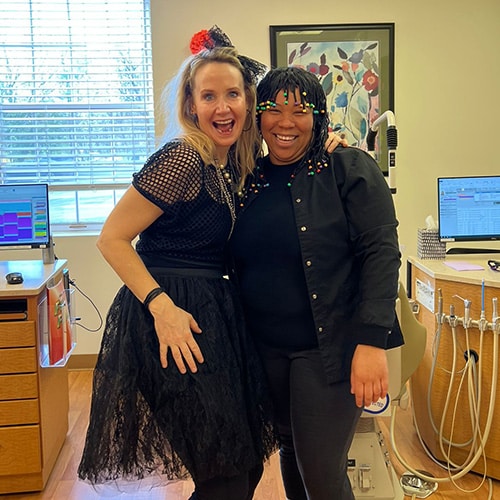Orthodontics is not just for children and teens! In fact, 1 in every 4 patients in orthodontic treatment is an adult. No one is too old for orthodontic treatment.
Adults seek orthodontic treatment for many of the same reasons as children do. Some adults had orthodontic problems as children but were unable to correct them until now. Others, who had treatment as children, may need further treatment as adults due to relapse or limitations in initial treatment. Or some may simply want to improve their smile.
Benefits of Adult Orthodontics
Adults can benefit from orthodontic treatment in many ways. These include:
- Align the teeth to create a more aesthetic and beautiful smile
- Correct relapse after previous orthodontic treatment due to lack of long term retainer wear
- Improve the ability to brush and floss, especially for crowded or overlapping lower front teeth
- Create a better or more comfortable bite and ability to chew
- Address missing teeth
- Close spaces between the teeth
- Reduce excessive wear on the teeth due to grinding or poor bite
- Jaw surgery to correct discrepancy between the upper and lower jaws.
Appearance of Braces
Many adults are concerned with the appearance of braces. Oftentimes, Invisalign® (The invisible alternative to braces) can be used to treat adults. This technology involves clear removable aligners, fabricated through advanced 3D imaging to align the teeth. For more severe problems, we have the option of clear ceramic brackets instead of metal.
Soreness and Discomfort
Orthodontic treatment is no more uncomfortable for adults than children. Adults undergoing orthodontic treatment report the same level of soreness and discomfort as children (although adults are usually more willing to tell us about the soreness).
Typically, the teeth are most uncomfortable 12-24 hours after an orthodontic adjustment and will disappear within 3 to 5 days. Modern appliances are smaller and more comfortable to wear. Due to innovations in orthodontics and the use of titanium less pressure is put on the teeth. Bite and alignment are actually corrected faster and with much less discomfort this way. It also decreases the time required between adjustments to every 8 – 10 weeks. Treatment time, on average, is completed in 15-18 months.
Cost
The fee for adult orthodontic treatment is determined the same way as child or adolescent treatment. It is based on the severity of the problem, the complexity of the correction, the appliances used and the length of time to correct.
Dr. Barbara Fodero has treated individuals in their 50’s, 60’s and even their 70’s. It is never too late to gain the smile you have always wanted.







